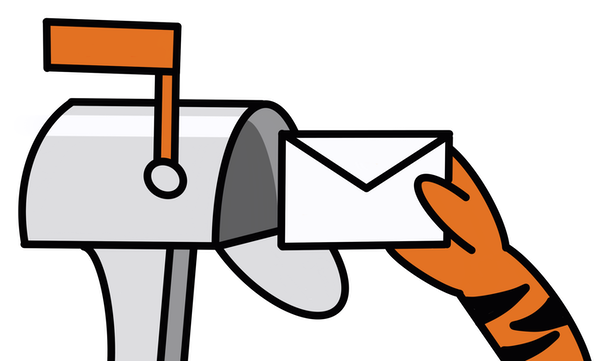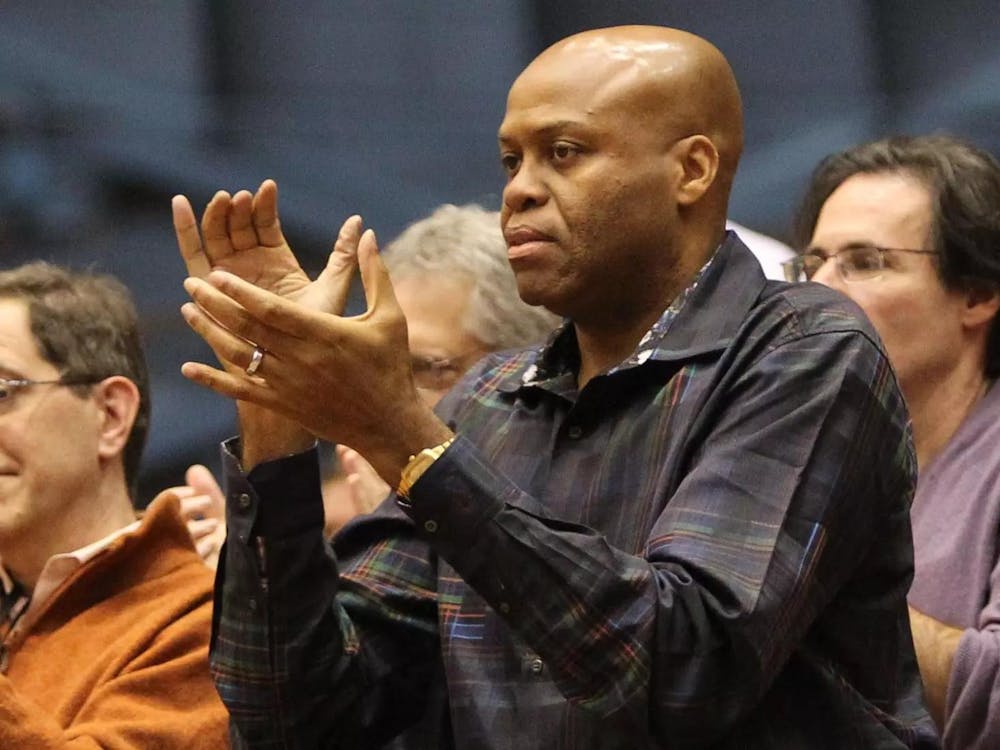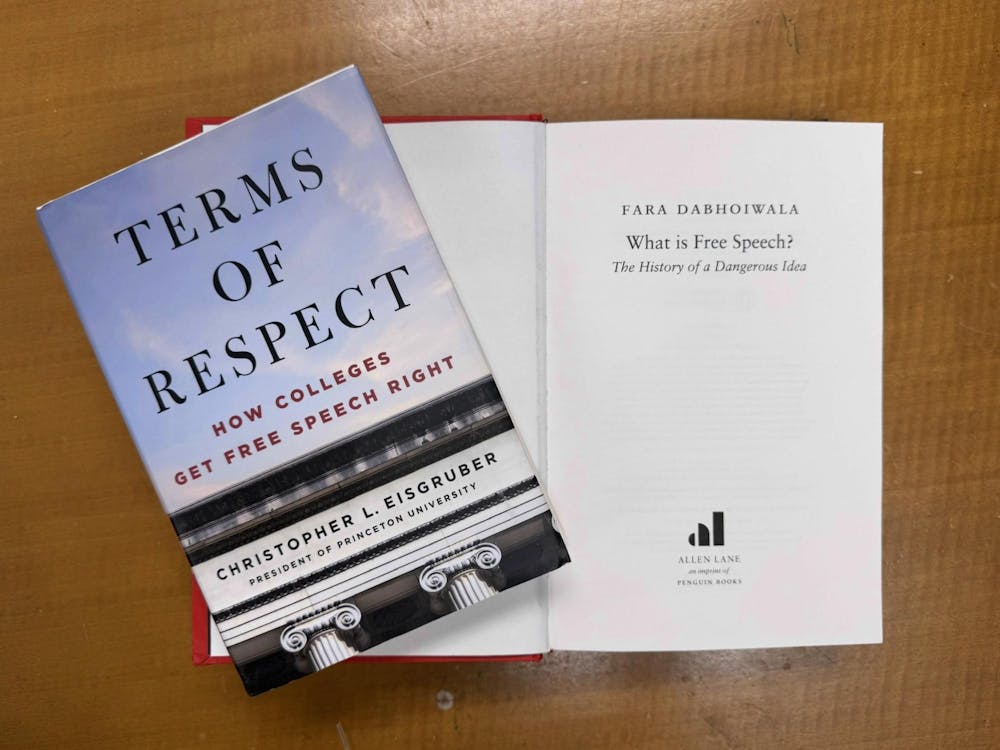She had doffed the white lab coat. On a normal Friday she would be peering over her students' shoulders to examine their lab data, but on Sept. 28, Shirley M. Tilghman stood behind a podium in front of Nassau Hall in a black robe trimmed with gold. To her right sat Princeton's three living past presidents, and Tilghman, in her speech, accepted with humility the honor of following in their footsteps. But walking up the steps to the presidential platform was not just the University's 19th leader, but a scientist who had found a new summit.
"If you will forgive a biologist the impulse to use a scientific metaphor, the American educational landscape is like a complex ecosystem, full of varied niches in which a rich diversity of organisms grow and thrive," she said toward the beginning of her speech.
But while on that day of public ceremony Tilghman confidently continued to fuse administrative aspirations with examples from the worlds of math and science, off the stand she had looked separately at her presidential hat, and setting her scientific background aside, acknowledged the enormity of her new challenge.
Tilghman is within a minority of college presidents who have never held a prior senior administrative post. According to data collected by the American Council on Education from 1998, less than five percent of all college presidents come directly from the faculty ranks, compared to 68 percent who have already been presidents, provosts or senior executives.
And in light of Tilghman's position within those percentiles, one of her oldest friends surmised that the offer to become president came as a shock.
"I think she'll be spectacularly good," said Nick Darby, who first met Tilghman in college, "but I don't think she knows that yet."
Darby said he imagines that when Tilghman received the offer she had two thoughts — that she would have to give up science and that she would be assuming a job for which she had no formal experience.
But it was not that "formal experience" for which the trustees' search committee was foremost looking when it decided Tilghman should be a candidate. Previously a member of the search committee herself, she left one day to teach a class. As it turned out, it was precisely those attributes she would use while away from the committee that its members most admired.
"The trustees said that two things were absolutely essential," said University Vice President and Secretary Thomas Wright '62. "A very high academic standard and a very strong personality, and [Tilghman] had overwhelming strength in both these areas."
According to Wright, while it would have been "nice [for a president] to have experience, and fund raising skills," those qualities were "good" rather than crucial.
President Shapiro had been the "experienced" president, having served as president of the University of Michigan for eight years prior to coming to Princeton. That administrative background had shaped his approach to his post, earning him a reputation as a reserved, well-respected man with strategic vision.
Tilghman, the teacher, who had spent 15 years living and working in Princeton but little time in Nassau Hall, has already earned a reputation as the president who is more intense, direct and emotionally involved.

USG president Joe Kochan '02 noted that while it is too soon to fully compare Tilghman to Shapiro, he has observed a difference in the way the two allocate their time.
"[Shapiro's] focus in the years I was here often took him off campus," said Kochan, recalling the complicated process of scheduling time with Shapiro when he was so busy fund raising. But when Kochan mentioned to Tilghman three days prior to a USG senate meeting that she was invited to come at her own convenience, she found out the next meeting was scheduled for that Sunday and without even checking her calendar said, "Perfect, I'll be there."
Tilghman has tried to be everywhere — unabashedly admitting that she is in "sponge mode," soaking up knowledge about the University. But Tilghman's keen observation and active listening are skills not recently acquired for her new job, but ones she has manifested in her life and experimented with in her lab. Because, as a biologist might say, it is only by attending to the individual parts that you can make up an organic whole.
Tilghman refers to herself as a group thinker — more successful at solving problems with others than on her own.
For Tilghman, the most successful collaboration involves not just cursory attention, but a more intimate involvement with a group's participants.
Post-doctoral students, hands gloved while dropping solution into containers and eyes busily scanning their data, were quickly distracted from their tasks when asked about their relationship with Tilghman. Three women, two of whom had worked with her for at least five years, turned from their work to talk not only about the biologist's academic advice, but about her barbecues and photograph collages.
Tilghman started a tradition while still at her old lab, at Fox Chase Cancer Center, where every time someone left to start a new job, she would invite him to a dinner at which she would cook him his meal of choice. Somewhere in the midst of spilling barbecue sauce on herself while attempting to grill ribs, Tilghman also made collages as goodbye gifts — with photographs of all the people the honored guest had ever crossed paths with in the lab.
"Everyone takes their collage and says, 'Can I see anyone missing,' and generally they can't," said Beverly Jones, who has worked with Tilghman for seven years.
While Tilghman's scientific background equipped her with skills necessary for her new job, many say that her career path also showed a trend towards administration.
Tilghman had assumed prominent positions on committees, and as soon as she became director of the Lewis-Sigler Genomics Institute, the project became her "favorite child," according to associate director of the Lewis-Sigler Institute and molecular biology professor Jim Broach.
It was not only the University Board of Trustees that observed the biologist's presidential potential. Tilghman acknowledged in an interview with Charlie Rose this summer that she had been asked to be a presidential candidate at other universities. But when asked which ones, she refused to specify.
While Tilghman continues to soak up the University with her "sponge," she has also begun using it to paint. Like President Goheen 44 years before her, though Tilghman came in the greenhorn among many veteran administrators, she has already started to give Nassau Hall a new color.
Tilghman is currently heading six administrative searches and has already chosen some of her own top lieutenants, such as Provost Amy Gutmann.
Darby surmised that once Tilghman felt acclimated to her new job, she would focus more on her goals, adding her own touch to the University's campus.
While on talk shows and in person Tilghman has elaborated most on projects begun under Princeton's last president, since the beginning of her term, items on her own agenda have slowly crept through.
Soon after the announcement that she had been chosen as president, Tilghman took her lab out to lunch at Prospect House and entertained a barrage of questions.
" 'Why would I be president if I didn't want to change stuff?' " Sarah Tyler '02 recalled Tilghman asking in response to a question about her aspirations. Michele Clery, a post-doc in Tilghman's lab, had just had her second child, and Tilghman talked about opening a day care center on campus.
Tilghman has other ideas about accommodating professors who are also parents.
"Nothing is more difficult for parents than a snow day," Tilghman said with an air of experience. "It would be great if on a snow day we could have a 'Dillon Gym Day' — very simple things like that."
But while Tilghman — both veteran mother and scientist — could easily take her place behind a podium to insist that the community focus on feminism or shift its attention from the liberal arts, she has already established when it is appropriate to espouse her views on subjects with which she is less familiar.
In the past, Tilghman has never shied from making a public statement — calling for greater gender equality in the scientific community and writing to President Bush about his stance on stem cell research. But Tilghman said that her strong opinions will only extend as far as her sphere of knowledge.
"I feel confident speaking out on views where I'm a scholar — also speaking out on views of education," Tilghman said. But she added that there would be no reason to publicly espouse her views on an issue outside of her area of expertise.
But, of course, that area is slowly expanding.
"I'm feeling more confident than I was two months ago," said Tilghman several weeks ago, as she sat casually in her office in the Lewis Thomas Laboratory. "Though I still feel there's a huge amount for me to learn."
One could almost see Tilghman's dual emotion as she walked unflinchingly past the flash bulbs on Sept. 28, smile relaxed and enthusiastic, yet eyes wide at the new seat — a wooden throne — that awaited her on stage. And the sun, which seemed to shine down on the installation ceremony in celebration, also filtered through the trees as a scientist might see her new life, now refracted from one source off into many new directions.







